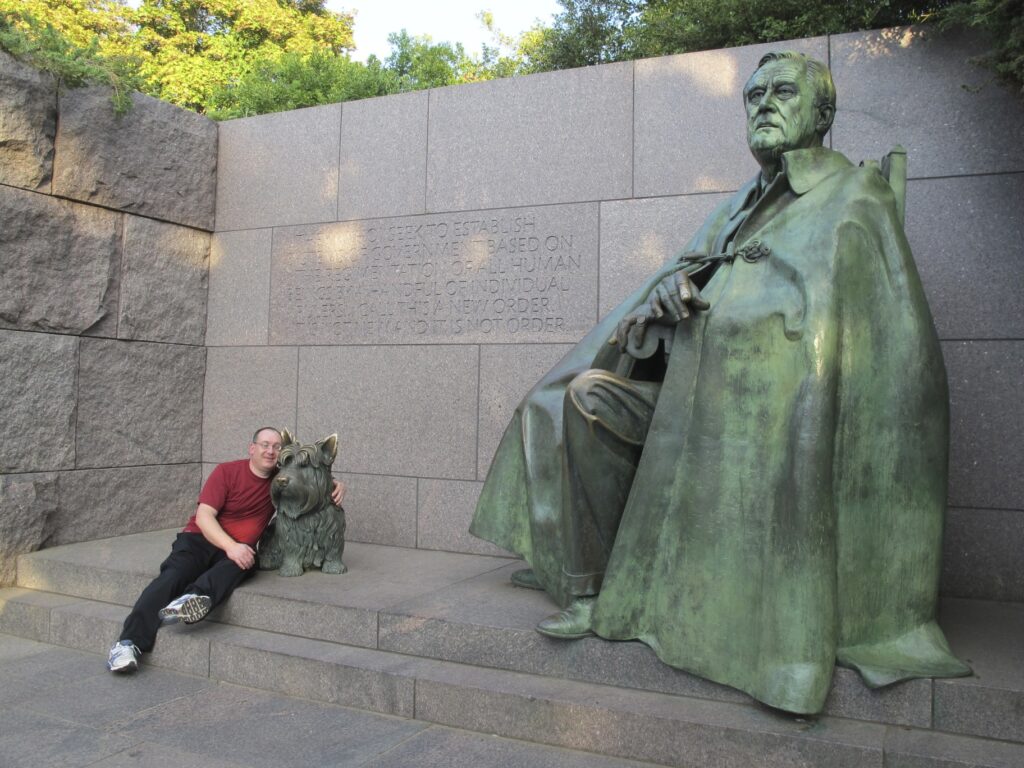Ten Tips For First Time Visitors to New York

Arriving in Style: Whether you’re budget-conscious or seeking convenience, consider the LIRR from JFK for a seamless transit to midtown Manhattan. The Long Island Rail Road (LIRR) not only offers a fast ride—taking about 35 minutes to reach Penn Station—but also provides a comfortable and reliable option for travelers who want to avoid the stress of traffic. Make sure to check your train schedule ahead of time, as frequencies can vary. Once you arrive at Penn Station, you’ll find yourself in the heart of Manhattan, with easy access to the subway, buses, and a range of taxis that can take you to your final destination. Taxi Tales: Opting for a taxi? Remember, fixed fares from JFK to Manhattan ensure a smooth ride without the fare surprises of ride-shares. Taxis provide a classic New York experience as you cruise through the bustling streets, passing landmarks along the way. One of the perks of taking a taxi is the ability to easily transport luggage, which can be awkward on public transportation. Just keep an eye out for the yellow cabs, and be prepared to tip your driver as a courtesy for their service, typically around 15-20% of the fare, depending on the quality of the ride. Times Square Truths: Dive into the Times Square frenzy but beware, nothing comes free amidst the glitz and glamour. While the bright lights and the vibrant atmosphere are a must-see, be mindful of street performers who often expect tips for their shows. Additionally, many of the attractions in the area come with a hefty price tag, so it’s wise to plan your budget accordingly. Instead, consider visiting nearby spots like Bryant Park or the New York Public Library for a more relaxed experience, which offer plenty of photo opportunities without the chaos of Times Square. Navigating Crowds: Respect the New York hustle; avoid halting abruptly for photos and selfies to keep the pedestrian flow unhindered. New Yorkers are known for their fast-paced lifestyles, so when you’re walking in busy areas, stay to the right and keep moving whenever possible. If you want to take pictures, look for designated areas or quieter streets nearby where halting won’t disrupt the flow of foot traffic. This simple courtesy will make your visit more enjoyable and help you blend in with the local rhythm. Lodging Logistics: Midtown may be pricey; consider cozy apartments for longer stays or explore alternatives in downtown or Brooklyn. Platforms like Airbnb and other vacation rentals offer a more localised experience, where you can have access to kitchens and living space, making your trip more comfortable. Additionally, staying in neighbourhoods like Williamsburg or Park Slope in Brooklyn provides a chance to experience different cultures and local dining – plus, it’s only a subway ride away from the main attractions. We do stay in midtown, but our choice is not a hotel. We’ve been staying at the AKA Times Square since 2010 and it is ideal. As you would know, Mardi is neurodiverse and I am vision impaired. So a strategy we use is familiarity. Midtown and the AKA gives us that. It is very easy to navigate away from midtown using a number of subways stations nearby and it allows me to independently travel. Plus the AKA is just awesome. We’ve stayed with them in Washington DC as well and on our recent trip to London we stayed at the AKA Marylebone Check them out here. Check out my five tips on travelling with a vision impairment here. Feast Like a Local: You don’t need to eat at a sit down restaurant every night. New York is expensive. Skip pricey eateries and savour the city’s flavours at bodegas, delis, and food carts across Manhattan, Brooklyn and Queens. Each borough boasts its own culinary gems, and Queens, in particular, is known for its incredible diversity. From authentic ethnic cuisines to mouthwatering food trucks, exploring these casual dining options not only saves you money but also allows you to taste the true essence of New York City. Make sure to try iconic foods like bagels, pizza, and the famous halal carts for a truly local experience. Tipping Etiquette: Tips made simple—double the tax for a hassle-free dining experience and beware of pre-included gratuities. In addition to dining, remember that tipping is customary for various services, including hotel staff, bartenders, and taxi drivers. It’s a way to show appreciation for good service. For larger groups, always check your bill for any automatic gratuity fees, as some restaurants include it when you have a certain number of guests—a detail that can save you some confusion when calculating your total bill. Statue of Liberty Sneak Peek: Embrace the iconic symbol of freedom for free aboard the Staten Island Ferry—no tickets needed. This iconic orange ferry runs every 30 minutes and offers stunning views of the Manhattan skyline and the Statue of Liberty as it glides across New York Harbor. Bring your camera to capture the breathtaking scenery, and don’t forget to enjoy the ride; it’s as much about the journey as the destination. While you won’t be able to step foot on Liberty Island without a ticket, you can still appreciate one of the most recognizable landmarks from the comfort of the ferry. Smart Subway Moves: Embrace convenience by paying for subway rides with your phone or watch, eliminating the hassle of metro cards. This modern feature allows you to easily tap your device at the turnstile, making it a time-efficient way to navigate the city. Familiarize yourself with subway maps and apps that can direct you on the quickest routes to your destinations. Additionally, remember to check for platform signs that indicate if your train is local or express, which can save you valuable travel time. Comfort First: Pack comfy shoes to seize every moment in the city that demands exploration on foot, uncovering hidden gems with every step. New York City is best experienced by walking, where the sights, sounds, and smells create an unforgettable atmosphere. Consider choosing
Traveling with Low Vision: Five Essential Tips

Sometimes our eyesight lets us down. In my case, my vision has been a challenge since I was born. For over 50 years, I’ve experienced low vision, and through extensive worldwide travel and experience, I’ve developed five tips that have helped me navigate the world. I’m confident they can assist you as well. Is Traveling Difficult for You? Do you find it challenging to read departure and arrival boards at airports? Are the indicator boards at train stations and bus terminals hard to decipher? Have you struggled to locate a restaurant where you’re meeting a friend or arrived late for a sporting event or concert you’ve been eagerly anticipating? If you answered yes to any of these questions, then these five tips are for you. 1. Do Your Research Before heading to your destination, it’s crucial to conduct thorough research. Whether you’re traveling to Japan, New York, or somewhere in Europe, familiarise yourself with the area. Find out the locations of the shops, shows, or museums you want to visit, and understand the transportation options available. For instance, during my recent trip to Japan, I wanted to buy a quality Japanese knife for cooking. I researched knife shops in Tokyo and Kyoto to find a couple of promising options. I searched their websites, located their addresses, and explored public transport routes to get there from my hotel. I noted how long it would take and their opening hours. By doing this research, I was able to easily and stress-free get to the knife shop and purchase the knife I wanted. 2. Book Meet and Assist Services My second tip is to utilise “meet and assist” services, which many airlines and airports offer. Whenever I’m traveling to an unfamiliar airport, I always book this service, even at familiar ones. My wife, Mardi, is autistic, and mixed with low vision, airports can be overwhelming. Consider major international airports like Frankfurt, JFK, or Heathrow, which can be particularly confusing. The meet and assist service alleviates the stress by providing an escort from check-in to your gate or on to the aircraft. Upon arrival, they can guide you through immigration, customs, and baggage claim. For example, the Quant team took wonderful care of us in New York, making our experience easy and stress-free. 3. Pre-Book Tactile Tours The third tip is to plan ahead regarding experiences you want to enjoy, such as concerts or museum visits. Call or email ahead to inquire about accessibility features for individuals with low vision. Ask if they have audio guides, large print materials, or tactile experiences available. When I visited Lord’s Cricket Ground in St. John’s Wood, London, I had the opportunity to feel the grass and walk on the pitch because I reached out ahead of time. A similar experience occurred at the Smithsonian Air and Space Museum in Washington, D.C., where I sat in the cockpit of a space shuttle. Many venues are more than willing to provide assistance to people with disabilities when you simply ask. 4. Allocate Extra Time The fourth tip is to allocate extra time for your activities. As someone with low vision, I often find that things take longer than expected. Therefore, I make sure to build additional time into my schedule so that I don’t miss out on exhibits, experiences, or connecting transportation. For instance, when traveling from our hotel on 44th Street to a concert at 34th Street, Google indicates it’s a 12-minute walk. In reality, navigating large crowds, traffic lights, and locating concert hall entrances can extend this time significantly. By allowing 10 to 15 extra minutes in your itinerary, you reduce the chances of disappointment and give yourself flexibility to enjoy your surroundings even if you arrive a bit early. 5. Bring Your Accessibility Tools Finally, my fifth tip is to pack your accessibility tools. At home, I use various magnifiers, but on the road, I prefer more portable options. I carry handheld and pocket magnifiers to assist me while traveling, especially when I need to read a menu on a train or airplane. In addition, I always have a monocular handy to help me spot landmarks if I get lost. For example, if I find myself stuck in a grid like New York City and need to identify street signs, my monocular serves as a useful tool. I recommend visiting websites of vision agencies to discover accessible magnifiers that suit your needs and to pack several for your travels. Here’s my favourite: www.visionstore.com.au Bonus Tip: Don’t Underestimate the Cognitive Load of Travel Travel can add significant cognitive load, especially when navigating airports with low vision. It’s essential to be aware of the extra stress that comes with travel and to adopt at least one of these tips to reduce that burden. By preparing properly, you’re more likely to have enjoyable and rewarding travel experiences. I’ve travelled the world and enjoyed countless opportunities, many of which are enhanced by my commitment to preparation and accessibility. I’d love to hear your tips on traveling with low vision or any other disabilities. What strategies have you found effective in making your travels easier? Drop a comment below! Thank you for reading, and don’t forget to like and subscribe for more tips and insights from Linke Lifestyle. Safe travels!

